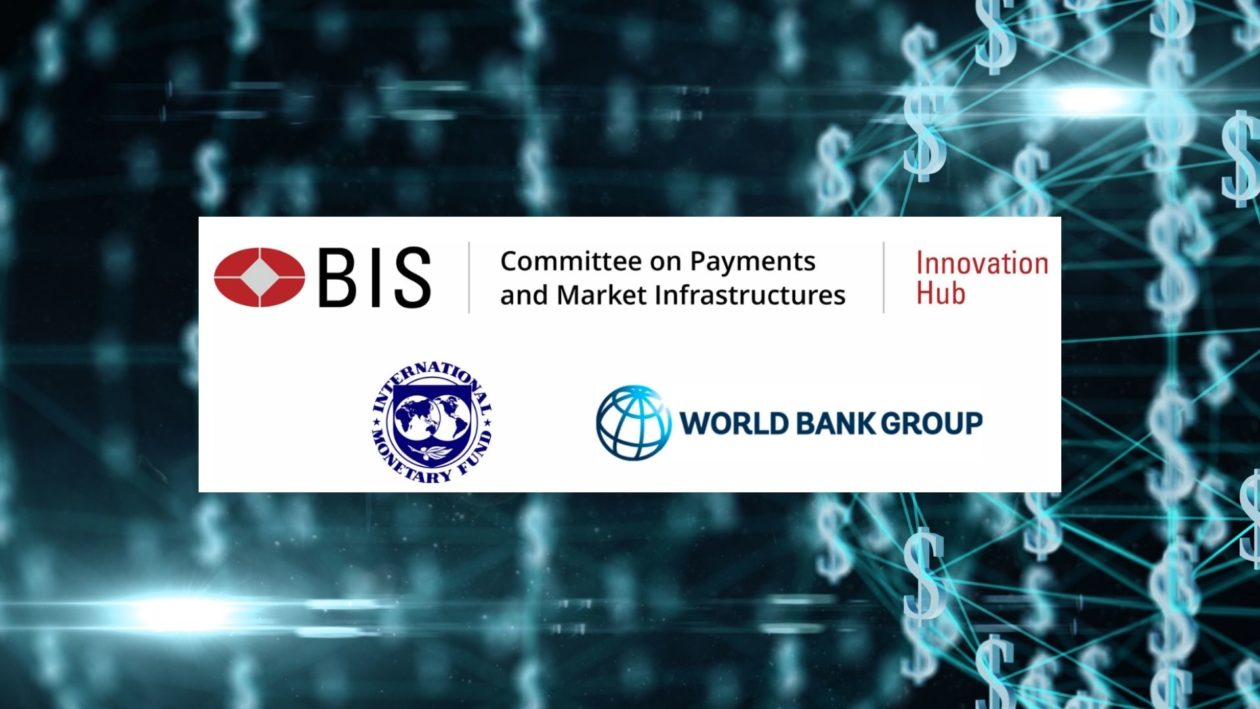As work on central bank digital currencies (CBDCs) — whether for wholesale or retail use — gathers steam around the world, countries have to work together for CBDCs to improve cross-border payments, according to a joint report to the G20 released today.
The report — jointly prepared by the Bank for International Settlements (BIS) Committee on Payments and Market Infrastructures, the BIS Innovation Hub, the International Monetary Fund (IMF) and the World Bank — analyzes how CBDCs can facilitate cross-border payments and calls for multilateral coordination given potential global implications.
Designing CBDC with international dimension and interoperability
“Reforming cross-border payments to make them cheaper, faster and more reliable is a priority and the G20 has endorsed a roadmap to address the key challenges,” said Jon Cunliffe, chair of the Committee on Payments and Market Infrastructures and deputy governor for financial stability of the Bank of England, in a statement.
“While many of the roadmap’s actions seek to improve the existing cross-border payments ecosystem, CBDCs offer the opportunity to start with a ‘clean slate,’ ” Cunliffe said. “It is crucially important that central banks take the cross-border dimension into account, in their work on potential CBDCs and so avoid many of the challenges in today’s legacy technologies and processes.”
While CBDC initiatives are proliferating— 86% of central banks are now actively exploring or developing CBDCs, according to a BIS survey — most countries have no plans to issue a CBDC any time soon. To date, only two countries have launched retail CBDCs: the Sand Dollar in The Bahamas and DCash in the Eastern Caribbean.
“The implications of CBDCs, even if only intended for domestic use, will go beyond borders. The macro-financial implications will ultimately depend on several factors such as the level and nature of international adoption — ranging from niche adoption to facilitate remittances in certain corridors to widespread currency substitution,” said Tobias Adrian, financial counselor and director of the monetary and capital markets department at the IMF in a statement.
Digital yuan beyond China
In Asia, China leads in CBDC developments with its digital yuan, formally known as e-CNY. The project, initiated in 2014 and called “Digital Currency, Electronic Payment” (DCEP) until recently, is now being tested by millions of consumers in multiple cities across China.
Although the e-CNY is intended primarily for domestic retail use and would be connected to existing retail and wholesale payment systems, cross-border use cases are emerging.
Foreigners would be able to register for an entry-level e-CNY wallet with a foreign mobile phone number during their stay in mainland China, the report notes. The People’s Bank of China and the Hong Kong Monetary Authority (HKMA) are conducting tests on the use of e-CNY in Hong Kong, so as to provide convenient cross-border payment services for both mainland and Hong Kong residents.
“Looking further into the future, the e-CNY could potentially be used for Renminbi-invoiced trade with foreign parties, but this is still subject to consultation with other central banks and entities,” the report notes.
See related article: Special series: China bets on the blockchain
Hong Kong and Singapore leading Asia’s cross-border CBDC initiatives
On a wholesale level, the central banks of China, Hong Kong, United Arab Emirates and Thailand, together with the BIS Innovation Hub in Hong Kong, have been collaborating on a multiple CBDC (mCBDC) bridge project to develop an international settlement platform on which central banks can utilize CBDC for transactions by financial institutions.
The results of the current phase of the mCBDC bridge project are expected to be released in a few months and will include the architectural design, use case, legal issues and practical challenges.
“If that is successful, you should see cross-border payments that can be done real-time across four jurisdictions 24/7, with the FX (foreign exchange) leg settled real-time on a PvP (“payment versus payment”) basis,” said Eddie Yue, chief executive of the HKMA at a recent event hosted by the Hong Kong Academy of Finance. “It will go a long way in advancing a cross-border payment solution for everybody.”
The next phase — expected to commence toward the end of 2021 — will involve the stock exchanges in Hong Kong and Bangkok as well as 30 banks in the four jurisdictions transacting on the platform.
Three models for mCBDCs
Central banks are increasingly collaborating with each other and the private sector as they explore mCBDCs as a means to facilitate cheaper and faster cross-border transactions including remittances.
The report groups potential mCBDCs into three models: compatible CBDC systems (similar to traditional cross-border payment arrangements); interlinked CBDC systems such as Project Jura — a CBDC project launched by France, Switzerland, the BIS and a private consortium; and a single system for mCBDC such as the mCBDC bridge and Singapore’s Project Dunbar.
Dunbar, which builds on Singapore’s earlier Project Ubin CBDC project, examines different governance and connectivity models for cross-border transactions using mCBDCs. “Both mCBDC Bridge and Dunbar involve different technologies and different stakeholders and, in doing so, are expected to shed light on a wide variety of governance, implementation, and policy issues related to cross-border aspects,” the report said.
Earlier this week, the central banks of Singapore and France announced their successful completion of a wholesale cross-border payment and settlement experiment supported by J.P. Morgan’s Onyx, involving a Singapore dollar CBDC and a euro CBDC, conducted using a permissioned, privacy-enabled blockchain based on Quorum technology.
“Today we moved the CBDC discussion one step closer in understanding how to take advantage of such an instrument,” said Sopnendu Mohanty, chief fintech officer of the Monetary Authority of Singapore in a LinkedIn post.
“Our experiments always involve commercial banks. We believe, and rightfully so, that commercial banks are integral to payments and play a crucial role in the infrastructure and the distribution of such instruments. @onyx of JPMorgan Chase & Co. was our commercial bank partner this time,” Mohanty wrote.
This latest experiment also introduced the use of smart contracts to manage in real-time the automated liquidity pool and market-making service for EUR/SGD currency pairs.
“We have pushed our experiment another step beyond just issuing digital currencies and sharing ledgers, as many jurisdictions have done in the past, including Singapore: We introduced smart contracts using Defi concepts to improve liquidity,” Mohanty added. “The W-CBDC is now prime for a scale and production shift, and three key enablers should come together: Central banks, and Commercial banks, Facilitated by open and interoperable tech.”
See related article: France, Singapore complete cross-border CBDC test





